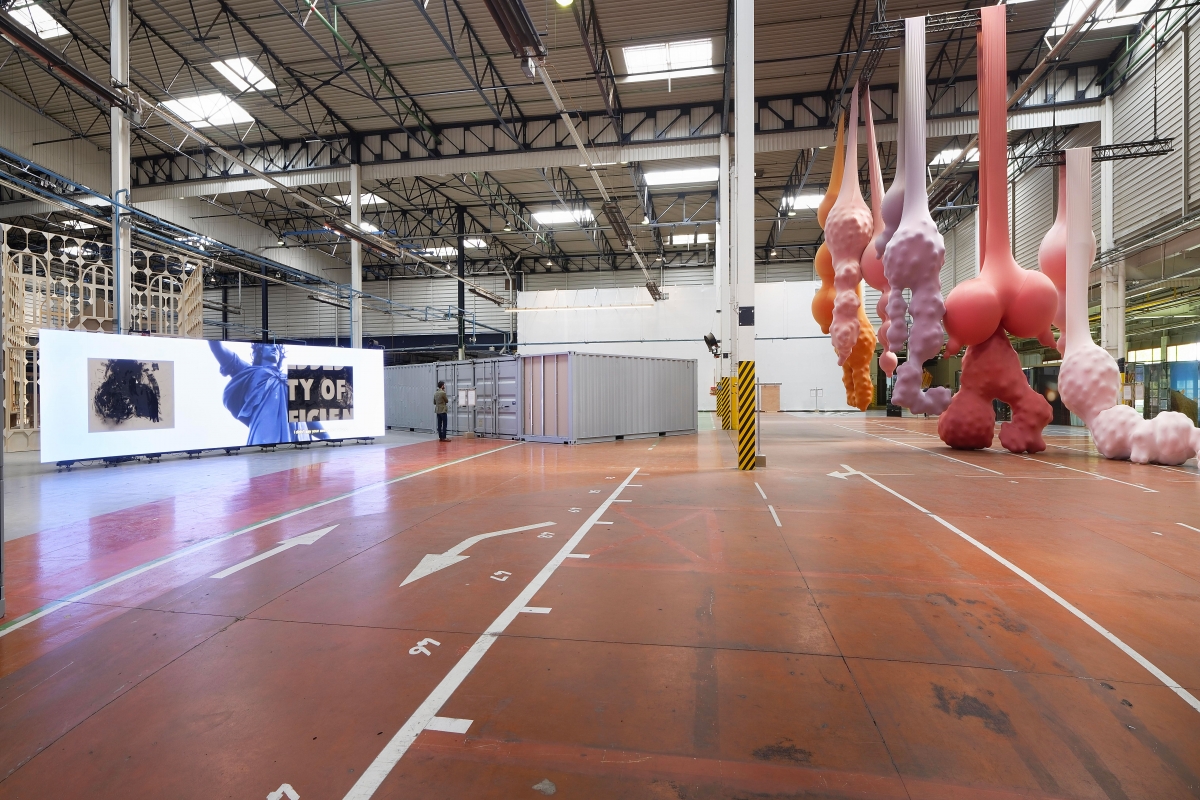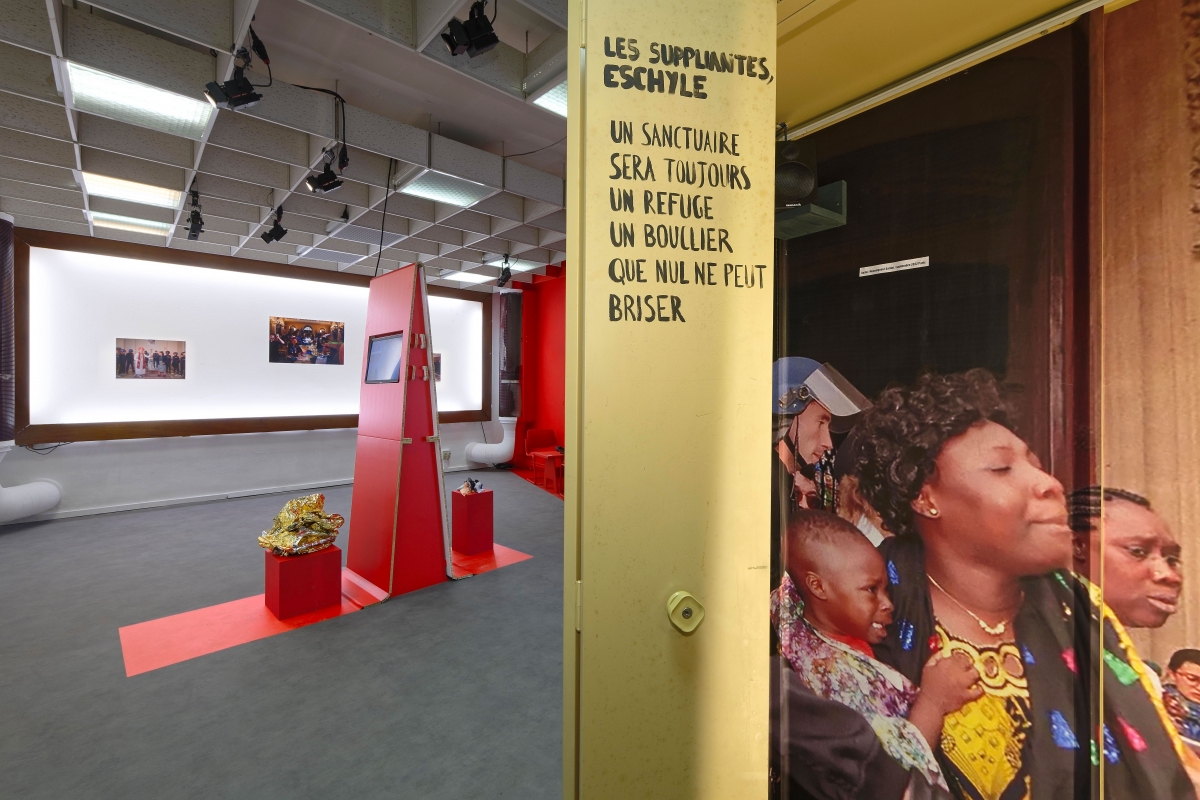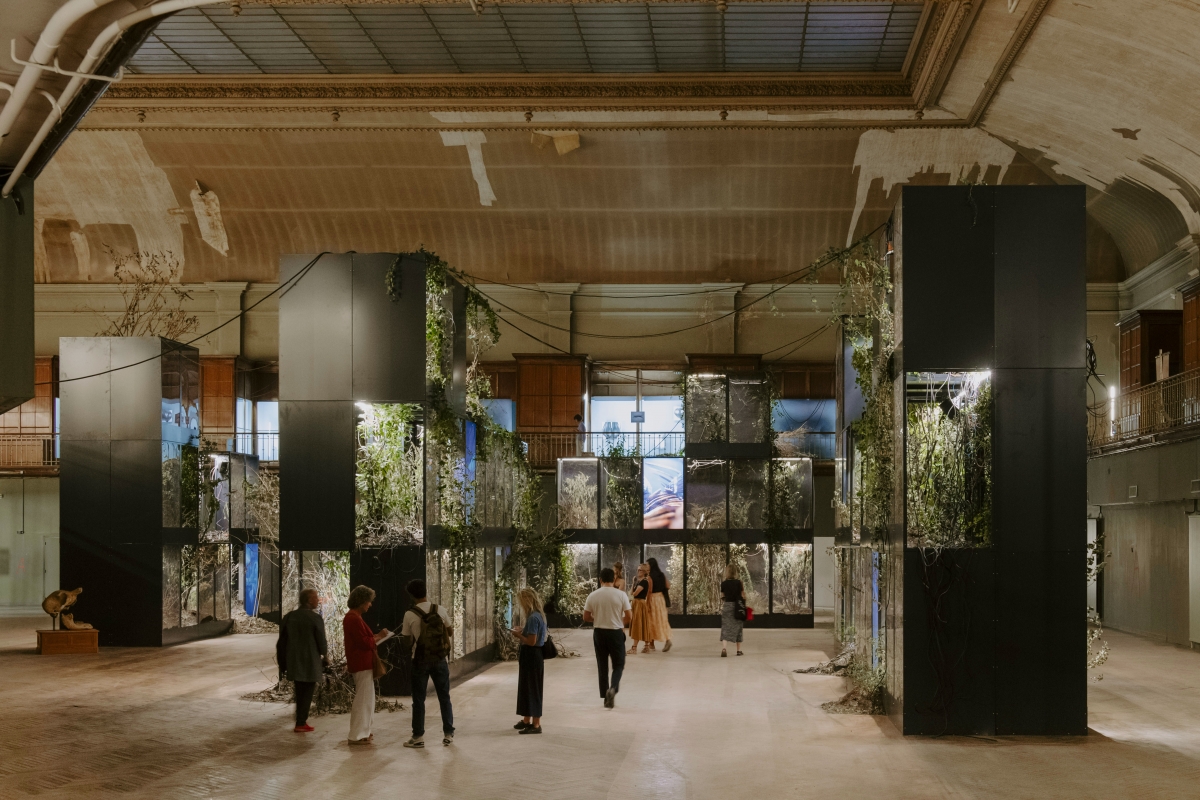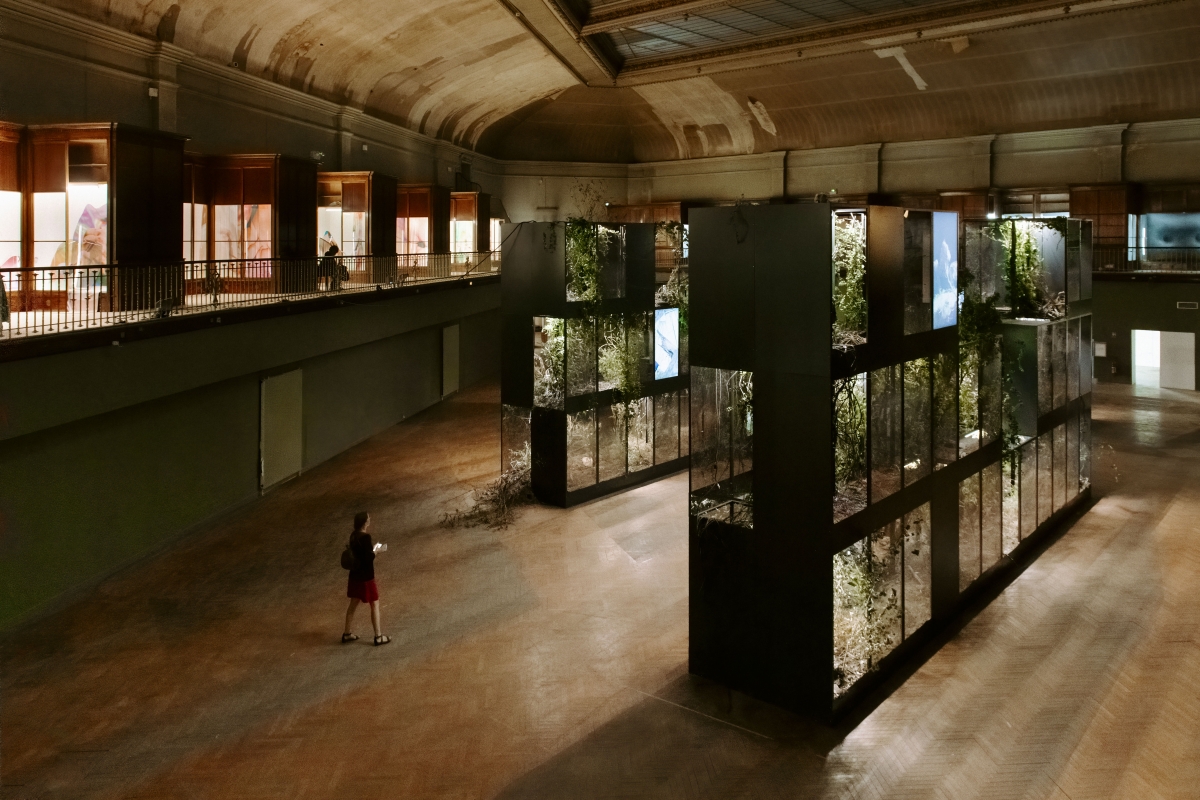A biennial is often a sprawling event. Dense, immense, dispersed. The Lyon Biennale of Contemporary Art is no exception to this tentacular disposition. Its 16ᵉ edition, conceived by the curatorial duo Sam Bardaouil and Till Fellrath, is erected this year under the ambitious banner of a “manifesto of fragility,” as it is entitled. Voluntarily anchored in the city and its history, mobilizing archives and museum collections in Lyon, this edition extends further than previous ones. Occupying twelve sites and imagined in three sections as “concentric layers”1, it begins at the MAC Lyon2 before spreading throughout the city3.
In this edition, a site appears as a literal manifestation of fragility: the former Guimet Musem of Natural History which has been closed and abandoned since 2007. Having opened its doors yet again for the first time since its closure, the now empty museum hosts works and installations proposed by invited artists. A dialogue with such a space seems difficult to develop without physically seizing the space, or of its furniture, for example, as seen with artist Tarik Kiswanson who suspended original furniture surmounted by immense oblong sculptures from the ceiling. Or wooden display cases that have become exhibition spaces for Lucile Boiron or Zhang Yunyao. But the strong presence of the site prevails, evoking the imaginary of the ruin, as with Leyla Cárdenas’s installation Self-contained Withstander that makes the museum reappear through photographs printed on wire. This image of the fragile museum can be found in several places in the biennale, with the presence of archaeological remains, casts and damaged paintings. And is it possible to compete with a museum bypassing the spectacular? At Guimet, it is in the heart of the impressive central hall that stands the equally monumental installation Grafted Memory System by Ugo Schiavi.
Occupying powerful places is always a risk for artworks. And the Lyon Biennale has invested in yet another site with an intimidating surface: the former Fagor factories and their seven halls. Perhaps aware of the trap the architecture can be, the curators invited artist Olivier Goethals to conceive immense installations creating a scenography and flow in the space. Nevertheless, one does not escape the gigantism nor the overwhelming sensation, the repeated use of the spectacular ultimately offering itself to be questioned. For it generates a relationship of force, no longer with the place but between the works themselves. Because of their size, their medium or their location, certain works drown out those which are less spectacular, less visible - proposals worth seeing, despite, or thanks to, their modest scale. In the corner of a discreet container, for example, where Michelle and Noël Keserwany's film Les chenilles is shown; in Hall 3 - a building hidden behind the outdoor café - which houses the delightful production of Organon Art Cie, a collective project with and about the inhabitants of the Belle de Mai neighbourhood in Marseille, as well as with students from Lyon. A proposal trading the spectacular for the concrete; the monumental for the human scale.
Fragility is indeed addressed by many works from multiple angles: war, destruction, history, memory, struggles, exile, the environment, the intimate, the works themselves. Entitling the biennale “manifesto of fragility” implied a strong positioning, referring to the idea of a declaration, a (written) program of positions and actions, or to the tradition of the avant-gardes that made manifestos the supports of aesthetic and political claims. Despite the intentions of the curators, the various sections imagined together and separately fail to compose this so-called manifesto, or common discourse. Whilst this 16th Lyon Biennale may certainly exhibit manifestations of fragility and a plurality of voices, it nevertheless seems to unfold a panorama of fragility(ies) rather than a single manifesto.
Notes
- Sam Bardaouil and Till Fellrath, “Curatorial Concept”, in Manifesto of Fragility. Guide de la 16ᵉ Biennale de Lyon, SilvanaEditoriale, Milan, 2022.
- At the MAC Lyon, the biennale begins with the exhibition "The Many Lives and Deaths of Louise Brunet", then with "Beirut and the Golden Sixties", an exhibition in co-production with the Gropius Bau, Berlin, on the succeeding two levels of the museum.
- The third section is entitled "A World of Endless Promise".










